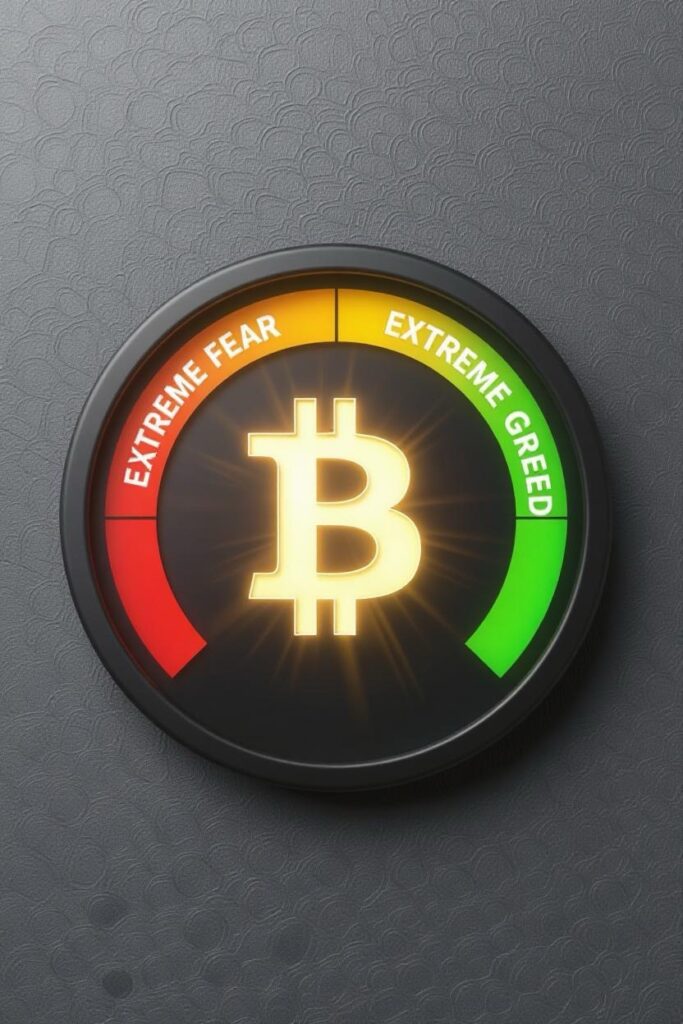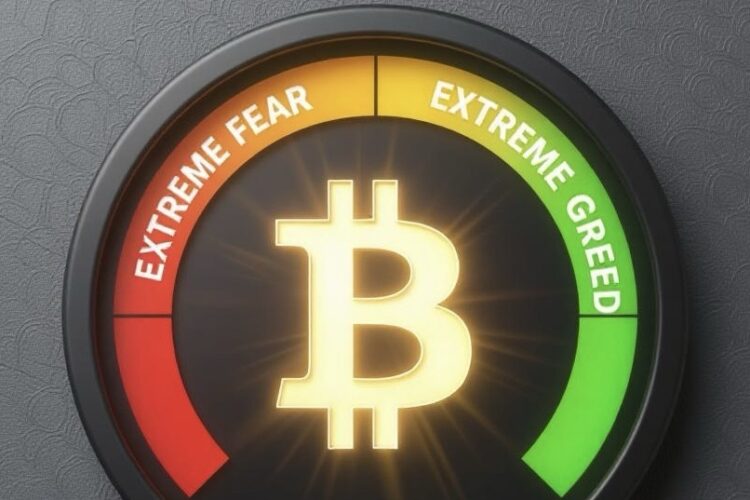The CMC Crypto Fear and Greed Index, created by CoinMarketCap, measures cryptocurrency market sentiment on a 0–100 scale, where low scores (0–24) indicate extreme fear and potential buying opportunities, and high scores (75–100) signal extreme greed and possible market corrections. Launched in 2023, it tracks emotions using volatility, market momentum, social media, surveys, Bitcoin dominance, and trends. It helps investors make contrarian decisions, like buying during fear or selling during greed. As of October 17, 2025, the index is at 26 (Fear), reflecting Bitcoin’s drop below $104,000. The index aligns with market cycles, peaking in 2021’s bull run and dipping in 2022’s bear market. It’s a useful tool for navigating volatility but should be paired with other indicators due to potential social media noise or lagging data.
Long Version
The CMC Crypto Fear and Greed Index is a multifactorial indicator designed to capture the market sentiment within the cryptocurrency ecosystem, providing an emotional snapshot of how investors are feeling about crypto market conditions. Developed by CoinMarketCap (CMC), a leading platform for tracking market capitalization, price movement, and other data, this index quantifies the prevailing emotions of fear and greed on a scale from 0 to 100. A low score signals extreme fear, often associated with panic selling and undervalued opportunities, while a high score indicates extreme greed, potentially pointing to an overheated market ripe for correction. As a real-time indicator, it helps traders and investors navigate volatility, market trends, and psychological factors that drive investment decisions. By analyzing a blend of data sources, it offers macro insights into the crypto market’s market mood, serving as a tool for sentiment analysis in an environment known for emotional overreactions.
History
The concept of a Fear and Greed Index originated in traditional finance, with CNN’s version for stock markets inspiring adaptations for cryptocurrencies. The crypto variant gained prominence following Bitcoin’s volatile 2017 bull run, where speculative fervor and FOMO (Fear of Missing Out) led to dramatic price momentum swings. The original Crypto Fear & Greed Index was launched by Alternative.me in 2018, focusing primarily on Bitcoin and drawing from sources like social volume and on-chain data.
CoinMarketCap introduced its proprietary CMC Crypto Fear and Greed Index in August 2023, building on this foundation to provide a more comprehensive view tailored to the broader cryptocurrency landscape. This launch came amid growing interest in market cycles, with the index incorporating CMC’s own data on user engagement and social trend keywords. Since its inception, it has been used to track shifts during major events, such as the 2024 Bitcoin halving and the approval of crypto ETFs, which influenced ETF net flows and Bitcoin dominance. By 2025, the index has become a staple for monitoring altcoin season dynamics and stablecoins flows, reflecting the maturation of the derivatives market and spot market interactions.
Methodology
The CMC Crypto Fear and Greed Index is a multifactorial indicator that aggregates data from multiple sources to produce a daily score. Unlike simplistic metrics, it weighs various components to reflect the market temperature and avoid overreliance on any single factor. The methodology draws parallels to traditional indices, such as those incorporating put and call options or junk bond demand, but is customized for crypto’s unique characteristics, including high volatility and rapid price movement.
Data is collected in real-time and processed to generate the index, which updates frequently to provide a current emotional snapshot. Historical data is also available via CMC’s API, allowing users to analyze past trends for technical analysis and pattern recognition in market cycles. The index emphasizes contrarian strategy opportunities, where extreme fear might signal buying the dip, and extreme greed warns of frothy valuations and overvalued assets.
Components
The index’s calculation involves several weighted factors, each contributing to the overall score:
- Volatility (25%): Measures fluctuations in Bitcoin and major altcoins, comparing current levels to 30- and 90-day averages. High volatility often correlates with fear, as it indicates uncertainty and potential panic selling.
- Market Momentum/Volume (25%): Assesses trading activity in the spot market and derivatives market, including order books and overall market capitalization. Sustained high volumes during uptrends suggest greed and speculative fervor, while low momentum points to fear.
- Social Media (15%): Analyzes social volume from platforms, tracking hashtags, interactions, and sentiment. Rapid spikes in discussions can signal FOMO or emotional overreactions, with tools providing additional context on search queries related to Bitcoin dominance or market manipulation.
- Surveys (15%): Incorporates polling data from crypto communities, though this component is sometimes paused. It gauges direct investor opinions on market trends and future expectations.
- Bitcoin Dominance (10%): Tracks Bitcoin’s share of total market capitalization. A rising dominance often reflects fear, as investors flock to Bitcoin as a safe haven, while declining dominance signals greed and shifts toward altcoins during altcoin season.
- Trends and Proprietary Data (10%): Includes trends for crypto-related searches and CMC-specific metrics like user engagement and ETF net flows. This helps identify emerging macro insights and on-chain data patterns.
These components ensure the index captures both broad psychological factors and niche indicators, making it a robust tool for sentiment analysis.
Interpretation
The index’s scale is divided into categories that guide interpretation:
- 0–24: Extreme Fear – Indicates widespread worry, often leading to undervalued opportunities as assets are oversold due to panic selling.
- 25–49: Fear – Suggests caution, with potential for buying the dip in a fearful but not panicked market.
- 50: Neutral – Balanced market mood, where emotions are stable and investment decisions can be based on fundamentals.
- 51–74: Greed – Points to optimism, but warns of building speculative fervor and possible corrections.
- 75–100: Extreme Greed – Signals an overheated market with frothy valuations, often preceding downturns driven by FOMO.
Investors use these levels to assess whether the market is acting on emotional overreactions or rational trends, comparing current readings to historical data for context.
Usage in Investment Decisions
The CMC Crypto Fear and Greed Index is widely employed for contrarian strategy, encouraging investors to act against the crowd. During extreme fear, it may highlight undervalued opportunities for long-term holds, such as accumulating Bitcoin or altcoins amid panic selling. Conversely, extreme greed prompts caution, suggesting profit-taking to avoid corrections in an overheated market. Traders integrate it with technical analysis, monitoring shifts alongside price momentum, stablecoins inflows, and derivatives market activity. For instance, a low score combined with rising Bitcoin dominance might signal a shift to safe haven assets, while high greed could indicate an impending altcoin season. It also aids in timing ETF net flows and navigating market cycles, helping users avoid FOMO-driven mistakes.
Historical Trends and Market Cycles
Historical analysis reveals the index’s alignment with market cycles. During the 2021 bull run, scores reached 97 amid extreme greed, preceding a 60% correction as speculative fervor peaked. The 2022 bear market saw plunges to 10 in extreme fear, marking bottoms before rebounds. In 2023–2024, post-halving rallies pushed scores into greed territory, correlating with ETF net flows and reduced volatility. By 2025, fluctuations have mirrored macro events, such as U.S. debt concerns and tariff tensions, with the index dropping during liquidations and recovering on institutional inflows. These patterns underscore its role in identifying bull run peaks and bear market troughs, often influenced by on-chain data and social volume.
Current Status
As of October 17, 2025, the CMC Crypto Fear and Greed Index stands at 26, categorized as Fear. This reflects recent market pressures, including Bitcoin’s drop below $104,000 and over $20 billion in liquidations, signaling nervous investors amid broader macro uncertainties. Compared to last week’s 64 (Greed) and last month’s 53 (Neutral), the current reading suggests a shift toward caution, potentially offering buying the dip opportunities if sentiment stabilizes. Recent discussions highlight debates on whether this fear phase indicates a smarter, more calculated market or the end of the ongoing bull run.
Related Concepts
The index relates to broader tools like the Altcoin Season Index, which tracks shifts from Bitcoin dominance to altcoin gains, and traditional metrics such as put and call options in derivatives or junk bond demand in fixed income. It complements on-chain data analysis and technical analysis, providing a holistic view of market trends and investment decisions.
Limitations
While informative, the index is not infallible. It can be influenced by manipulated social volume or short-term noise, and it performs better for short-term signals than long-term market cycles. Critics note that surveys and trends may lag real events, and it should be used alongside other indicators to avoid overreliance on emotions.

Hashtags For Social Media
#CryptoFearAndGreed #FearAndGreedIndex #CMCFearGreed #CryptoSentiment #MarketSentiment #BitcoinFearGreed #CryptoMarketMood #InvestorEmotions #CryptoVolatility #BitcoinDominance #AltcoinSeason #CryptoTrading #Cryptocurrency #Bitcoin #Ethereum #BTC #ETH #Blockchain #CryptoNews #Trading #Investing #CryptoInvestor #MarketTrends #SentimentAnalysis #FOMO #PanicSelling #BullRun #BearMarket #CryptoIndex #FearGreed
Related Questions, Words, Phrases
what is cmc crypto fear and greed index | cmc fear and greed index explained | current cmc crypto fear greed index value | how does the cmc fear and greed index work | what does extreme fear mean on cmc index | cmc crypto sentiment analysis tool | history of cmc fear and greed index | cmc fear greed index components breakdown | interpreting cmc crypto fear and greed levels | cmc index vs alternative me fear greed | how to use cmc fear and greed for trading | cmc crypto market mood indicator | latest cmc fear and greed index reading | cmc index during bitcoin bull runs | what causes cmc fear greed index fluctuations | cmc crypto volatility factor in index | role of bitcoin dominance in cmc index | cmc fear and greed surveys explained | trends data in cmc crypto index | contrarian strategies with cmc fear greed | cmc index historical trends 2021-2025 | limitations of cmc crypto fear index | cmc vs cnn fear and greed index comparison | how accurate is cmc fear and greed index | cmc index and altcoin season correlation | impact of etf net flows on cmc index | cmc fear greed in bear markets | what is fomo in cmc crypto index | cmc index for investment decisions | real-time cmc crypto sentiment tracker | cmc fear and greed methodology details | how to access cmc fear greed api | cmc index and market cycles analysis | panic selling signals in cmc index | overheated market warnings from cmc fear greed






